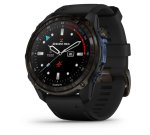Shop by Category
Info
The Scuba Doctor has a great range of quality dive computer solutions for technical and rebreather divers.
Decompression Algorithms: ZHL-16C, VPM-B, DCAP, DCIEM, VVAL-18M... Does It Really Matter?
At the risk of annoying those who do have a preference for a specific decompression algorithm, the simple answer for most divers is NO the algorithm is not critical. There is no expert consensus that any one of the current crop of decompression algorithms is better than another. All of these algorithms used in dive computers and desktop table generation software, when set to their default conservancy values, will get you out of the water with an acceptable margin of safety. What we can say for sure is they are all imperfect representations of actual decompression in humans.
Numerous variants of ZHL-16C are very widely implemented in both sport and technical dive computers. For technical diving, versions of ZHL-16C that include user configurable Gradient Factor modifications are very popular because the GF values can be 'tuned' to provide different types of profiles for specific types of diving. VPM-B dive profiles typically have deeper initial stops, along with reduced time at shallow depths resulting in a 'smoother' profile although recent research calls into question the benefits of 'deep stops' especially for lengthy VPM-B profiles. DCAP was developed for use by early extended range divers (today we call them 'technical divers'.) VVAL-18M is the basis for the modern US Navy Tables. DCIEM has been extensively tested by the Canadian military to ensure its applicability to cold water working divers. RGBM (basis for NAUI tables with its roots in VPM) and DSAT (basis for PADI tables) are most often seen in no stop required sport diving applications. Recently, the RGBM model has been called in to question by a legal action, but it's not clear if the issue is with the algorithm itself or a specific dive computers' implementation, as most experts consider the RGBM model to be very conservative especially on repetitive dives.
The practices of decompression are not exact, in many ways as much about skill as science. Much of what we do in decompression diving is based on empirical observation and experience, rather than having a basis in theoretical science. Dr. R W (Bill) Hamilton, the late co-developer of DCAP and whose research in decompression is widely acknowledged as having a key role in opening up recreational extreme exposure diving in the early 90s, was fond of the saying 'what works, works'. The most important safety factor is not the decompression algorithm you select, rather your skill as a diver and that you closely follow the recommendations of that algorithm and safe diving practices in general. Also, best practice when diving as a team is that all divers should use the same algorithm in order to remain together as a team during ascent phase of the dive plan.
New Products - Tech Computers and Accessories


Garmin Descent Mk3i Watch Dive Computer with Silicone Band
-8%



